Jaguar E-Type à vendre
La Jaguar E-Type, également connue sous le nom de XK-E, est l'une des voitures de sport les plus légendaires des années 1960 et 1970. Avec ses lignes inimitables et son exceptionnelle combinaison de performances et de style, la E-Type a défini une époque et demeure un véhicule de collection prisé aujourd'hui. Que ce soit en roadster, en coupé ou en variante V12, la Jaguar E-Type est véritablement unique. Dans cet article, vous découvrirez tout ce qu'il faut savoir sur son histoire, les modèles les plus populaires et les critères d'achat clés de ce classique.
Résultats de la recherche
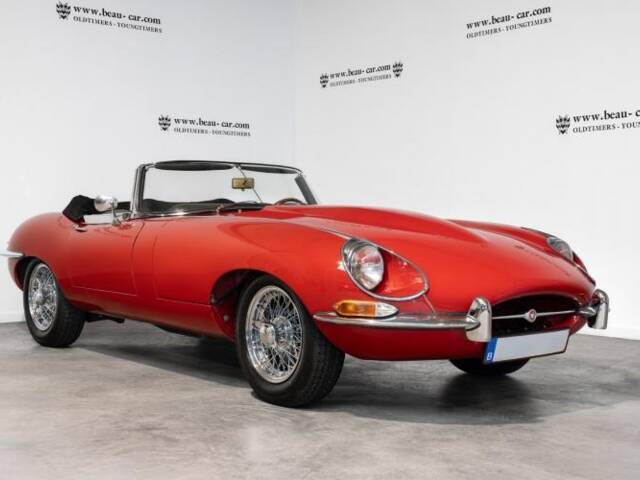
1968 | Jaguar E-Type
E Type OTS
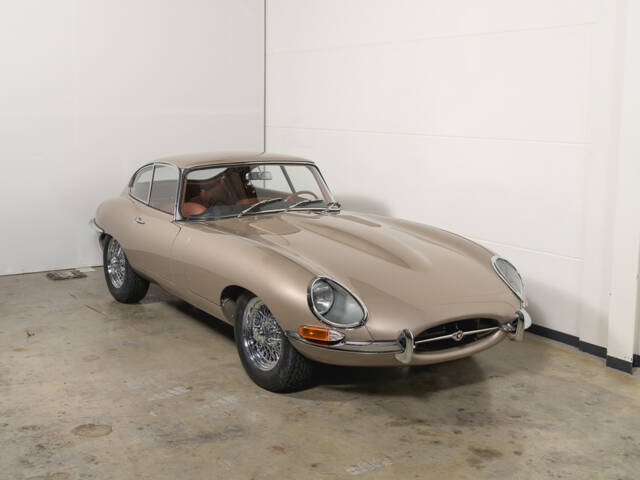
1962 | Jaguar Type E 3.8
Series I 3.8 Fixed Head Coupe
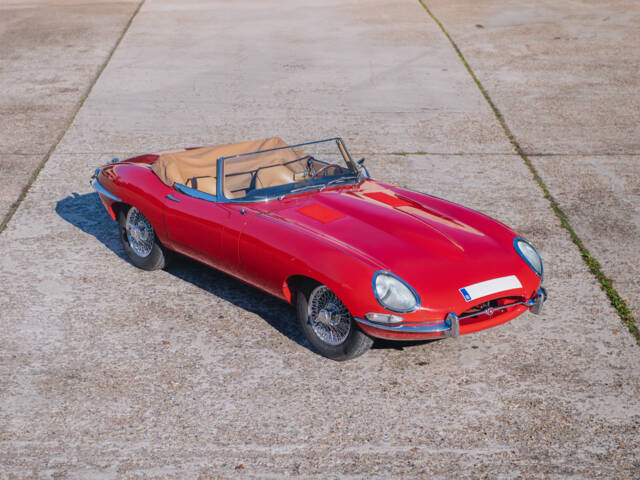
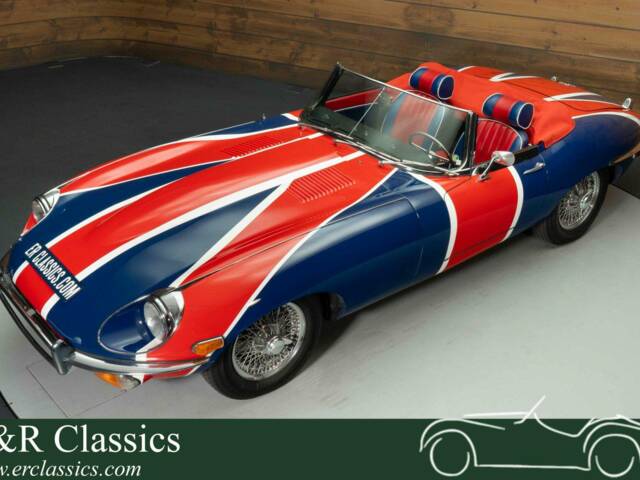
1970 | Jaguar E-Type
Jaguar E-Type S2 Cabriolet | Gerestaureerd | 1970
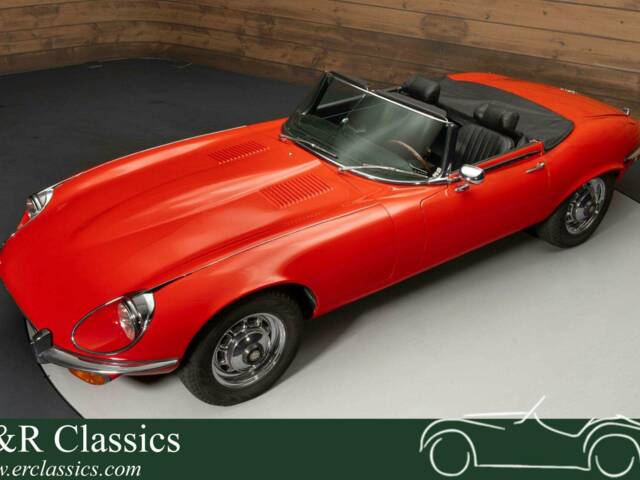
1971 | Jaguar Type E V12
Jaguar E-Type S3 Cabrio | Gerestaureerd | 1971
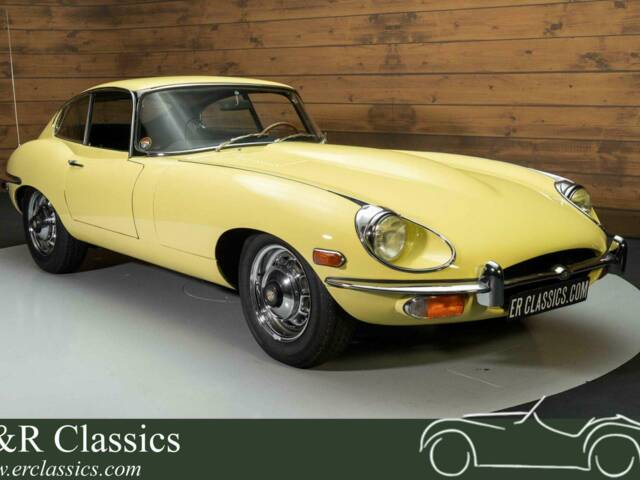
1970 | Jaguar E-Type
Jaguar E-Type S2 Coupe | Gerestaureerd | 1970
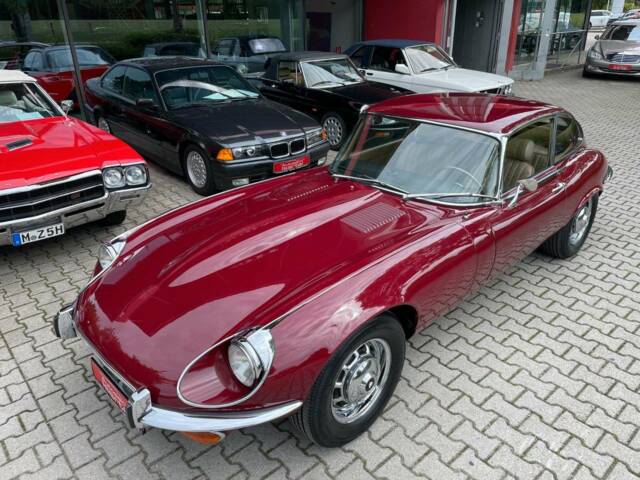
1971 | Jaguar Type E V12 (2+2)
Jaguar E-Type V12 SIII, CH-Fzg./Klima/5-Gg./H-Kz.
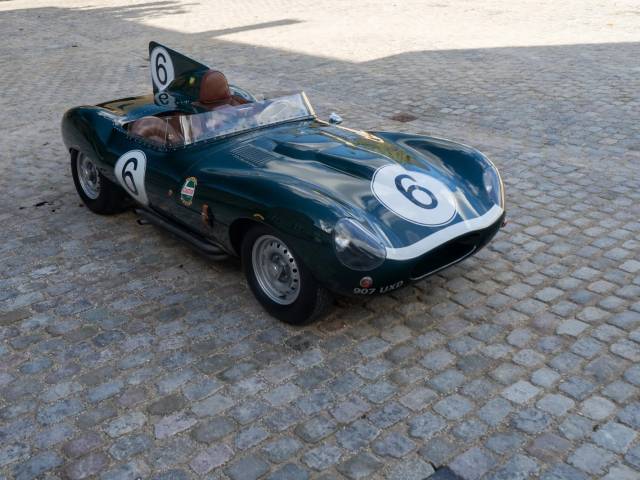
1962 | Jaguar Type E 3.8
Period-built D-Type Replica
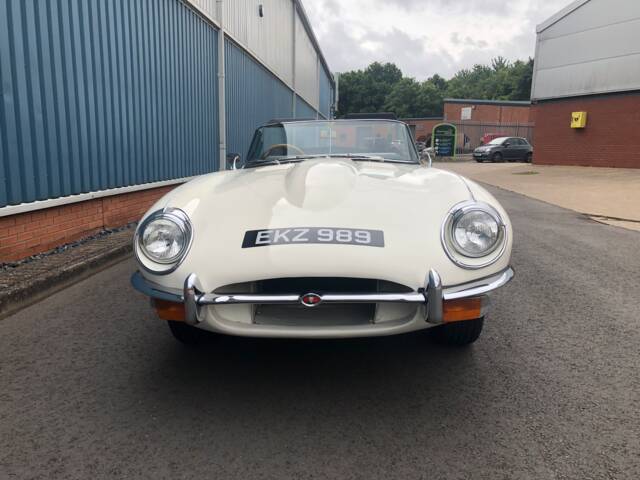
1969 | Jaguar E-Type
Great driving E Type, ready to be enjoyed
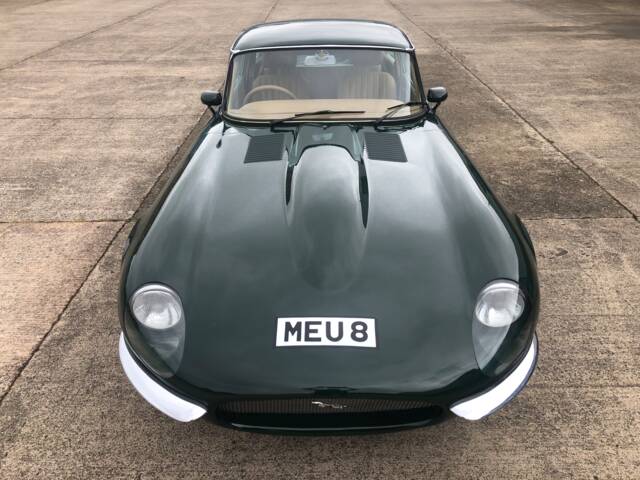
1973 | Jaguar Type E V12 (2+2)
A very special Jaguar E Type
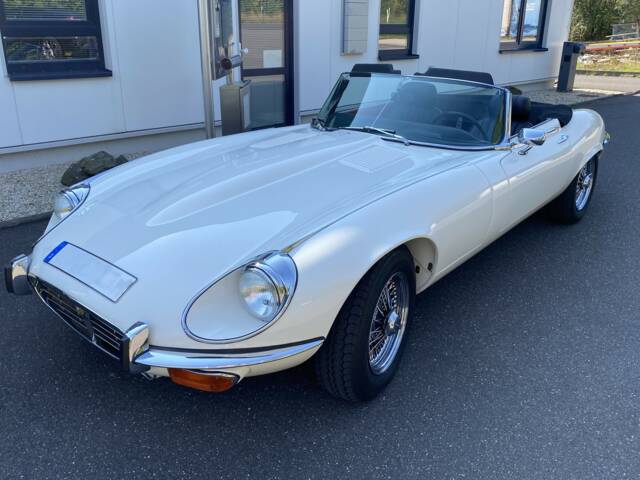
1973 | Jaguar Type E V12
Motor aufwendig revidiert - Zustand 2+
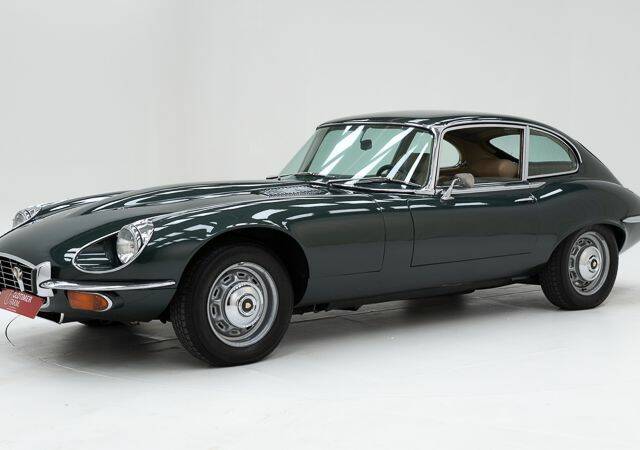
1971 | Jaguar Type E V12 (2+2)
1971 Jaguar E-Type Series 3 V12 '71
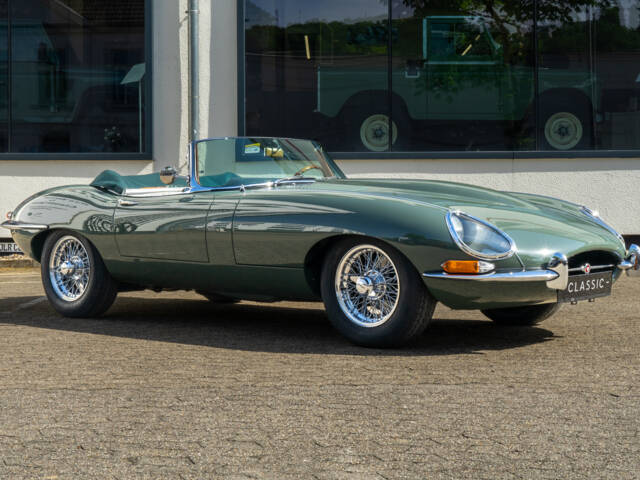
1967 | Jaguar Type E 4.2
E-Type Series 1 OTS 4.2 ltr. Matching Numbers
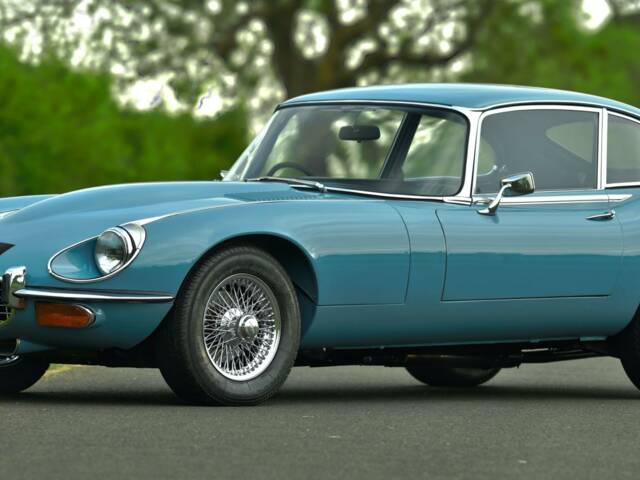
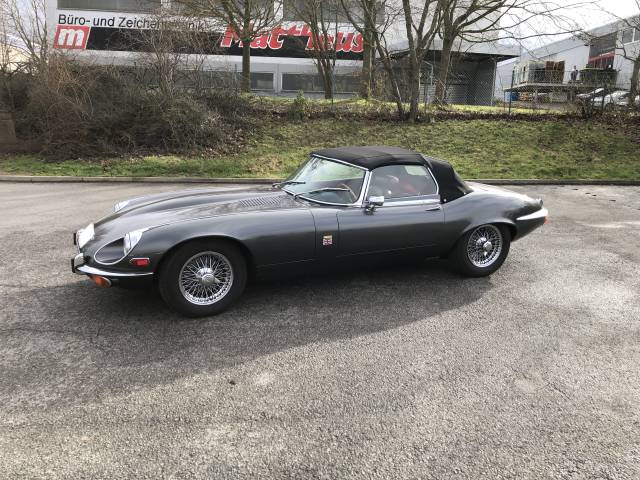
1973 | Jaguar Type E V12
Seit 25 Jahren in einer Hand TOP Zustand
Voiture ancienne Jaguar E-Type : Histoire
La Jaguar E-Type a été présentée au public pour la première fois en 1961 et a rapidement gagné une reconnaissance mondiale. Elle a été développée par Malcolm Sayer, qui a intégré des principes aérodynamiques dans son design, lui conférant une silhouette élégante et intemporelle. La première série de la E-Type était équipée d'un moteur six cylindres en ligne de 3,8 litres, disponible à la fois en roadster et en coupé. Au fil des ans, tant le moteur que le design ont été perfectionnés. L'introduction du moteur de 4,2 litres en 1964 a amélioré l'expérience de conduite avec un couple accru.
Un tournant important a été le lancement de la Série 3 en 1971, propulsée par un robuste moteur V12 de 5,3 litres. Ce modèle offrait encore plus de puissance et de confort tout en conservant le caractère classique de la Jaguar E-Type. Bien que la production ait cessé en 1975, la fascination pour la Jaguar E-Type continue de prospérer aujourd'hui.
Modèles de voitures anciennes Jaguar E-Type populaires
- Jaguar E-Type Série 1 (1961–1968) : La version originale avec son design caractéristique et ses phares recouverts. Les premiers modèles avec le moteur de 3,8 litres sont particulièrement recherchés. Les variantes ultérieures étaient équipées d'un moteur de 4,2 litres, offrant des performances plus douces et plus puissantes, avec un couple accru (269 ch). Cette version comprenait également une boîte de vitesses entièrement synchronisée et des freins améliorés.
- Jaguar E-Type Série 2 (1968–1971) : Les phares sont devenus exposés en raison des exigences légales aux États-Unis, et les systèmes de refroidissement et de freinage ont été améliorés. Cette série a eu droit à des feux arrière plus grands, une grille élargie et des tableaux de bord révisés. Bien que le design soit moins délicat que pour la Série 1, ces modèles sont plus fiables et pratiques pour un usage quotidien.
- Jaguar E-Type Série 3 (1971–1975) : Cette série a introduit le puissant moteur V12 de 5,3 litres, ajoutant encore plus de puissance à la E-Type. L'empattement a été allongé pour un plus grand confort, et les véhicules étaient principalement conçus comme des croiseurs luxueux. La Série 3 E-Type est particulièrement populaire en version cabriolet, identifiable par ses ailes élargies, sa grille plus grande et ses quatre tuyaux d'échappement.
Caractéristiques de la voiture ancienne Jaguar E-Type
La Jaguar E-Type incarne de nombreuses innovations dans son design et sa mécanique. Sa suspension indépendante et ses freins à disque à quatre roues ont été révolutionnaires à l'époque. La carrosserie élancée et le long capot restent des marques de fabrique du véhicule, et ses performances étaient exceptionnelles pour son temps. Le mélange de sportivité et d'élégance continue de séduire les collectionneurs et les passionnés.
Critères d'achat importants pour les voitures anciennes Jaguar E-Type
- État et niveau de restauration : La Jaguar E-Type est connue pour être sujette à la rouille, en particulier dans des zones critiques telles que le châssis et les seuils. Les restaurations complètes peuvent s'avérer coûteuses, mais un modèle bien restauré représente généralement un investissement précieux. Faites attention à la qualité des travaux de restauration et aux matériaux utilisés.
- Originalité et exactitude historique : De nombreuses E-Type ont été modifiées au fil des ans pour répondre aux exigences modernes. Les collectionneurs accordent une grande importance aux pièces d'origine et à une spécification authentique. Les véhicules fidèles à leur forme d'origine commandent souvent des prix plus élevés. Les différentes options de moteur (3,8L, 4,2L, V12) et les séries (I, II, III) ont des valeurs et des caractéristiques de marché différentes, les véhicules de série I, en particulier les premières variantes 3,8L, étant souvent les plus précieux. Vérifiez que le numéro de châssis correspond aux composants principaux tels que le moteur . L'originalité de la combinaison de couleurs peut également influencer la valeur du véhicule.
- Entretien et disponibilité des pièces de rechange : Les pièces de rechange pour la Jaguar E-Type sont encore relativement accessibles, surtout pour les modèles 4,2 litres plus courants. Cependant, il est essentiel de s'assurer que le véhicule a été entretenu régulièrement et que l'historique de service est bien documenté. Bien que l'originalité soit importante, certaines améliorations sensibles, comme des systèmes de refroidissement améliorés, peuvent renforcer l'utilisabilité au quotidien sans diminuer la valeur.
Voiture ancienne Jaguar E-Type : Caractéristiques techniques
Voici un aperçu des principales caractéristiques techniques et des particularités des voitures anciennes Jaguar E-Type les plus populaires :
| Série de modèle | Nom de modèle | Génération | Années de production | Variantes de carrosserie | Moteur | Puissance |
|---|---|---|---|---|---|---|
| Jaguar E-Type (XK-E) | E-Type | Série I | 1961-1968 | Roadster, Coupé | 3,8L, 4,2L six cylindres en ligne | 265 ch |
| Jaguar E-Type (XK-E) | E-Type | Série II | 1968-1971 | Roadster, Coupé | 4,2L six cylindres en ligne | 265 ch |
| Jaguar E-Type (XK-E) | E-Type | Série III | 1971-1975 | Roadster, Coupé | 5,3L V12 | 272 ch |
Restauration des voitures anciennes Jaguar E-Type
Restaurer une Jaguar E-Type nécessite un savoir-faire précis et de la patience. La carrosserie et le châssis sont des zones critiques, car la rouille est un problème courant pour ce modèle, en particulier au niveau des seuils de porte, des passages de roue arrière et de l'habitacle. Un examen approfondi des composants structurels tels que le châssis et les seuils est essentiel, nécessitant souvent des réparations de soudure étendues et des remplacements de tôles. Le moteur et la transmission demandent également une attention particulière, y compris la révision du moteur, l'évaluation et éventuellement la restauration de la boîte de vitesses et du différentiel, ainsi que le remplacement des joints et des roulements pour éviter les fuites d'huile.
Il est crucial d'utiliser les bonnes pièces de rechange pour la Jaguar E-Type afin de restaurer le condition originale du véhicule aussi fidèlement que possible. Des ateliers spécialisés et des fournisseurs pour la Jaguar E-Type, en particulier la série I, se concentrent sur des pièces historiquement correctes. Une restauration bien documentée utilisant des composants d'origine non seulement augmente la valeur du véhicule, mais contribue également à sa pérennité.
Cependant, une restauration complète peut s'avérer coûteuse et longue, surtout pour les premiers modèles et le V12 de la Série 3. Des restaurations bien réalisées peuvent atteindre des prix élevés sur le marché des collectionneurs et représentent un investissement précieux pour les passionnés.
Conclusion
La Jaguar E-Type reste un symbole de l'élégance intemporelle et des performances sportives. Avec sa forme iconique, ses moteurs puissants et son expérience de conduite inimitable, elle est l'une des voitures anciennes les plus convoitées au monde. Chez Classic Trader, vous trouverez une sélection soignée de modèles Jaguar E-Type – chacun d'eux étant un chef-d'œuvre de l'histoire automobile. Ceux qui recherchent un classique unique devraient envisager la Jaguar E-Type.
FAQ sur les voitures anciennes Jaguar E-Type
Pourquoi les voitures anciennes Jaguar E-Type sont-elles si populaires ?
La Jaguar E-Type fascine par son design intemporel et sa performance puissante. Elle est considérée comme un symbole de l'ingénierie britannique et est un véritable objet de collection. Selon la légende, Enzo Ferrari aurait qualifié la E-Type de "plus belle voiture jamais construite", ce qui l'a inspiré à créer le GT/L 'Lusso'. La combinaison de sa forme aérodynamique, de ses performances et de son luxe fait de la E-Type un véhicule de collection très prisé.
Comment puis-je trouver des pièces de rechange pour la Jaguar E-Type classique ?
On peut trouver des pièces de rechange pour la Jaguar E-Type classique auprès de fournisseurs spécialisés, de clubs de voitures anciennes et lors d'enchères. La disponibilité des pièces est particulièrement bonne pour les modèles de 4,2 litres. À noter que Jaguar Classic propose également des reproductions de certaines pièces, ce qui facilite la restauration et l'entretien de ces classiques.
Que faut-il prendre en compte lors de l'achat d'une Jaguar E-Type classique ?
Lorsque vous envisagez d'acheter une Jaguar E-Type classique, faites particulièrement attention à la rouille, notamment au niveau du châssis, des seuils de porte et des passages de roues, car ces zones sont particulièrement sensibles. Assurez-vous que le véhicule a été entretenu régulièrement et qu'il conserve le plus d'originalité possible. Un historique complet de la voiture est crucial pour les acheteurs potentiels. L'originalité du véhicule, y compris le moteur, la boîte de vitesses et l'intérieur, a une grande influence sur sa valeur et son authenticité. Il est également important de vérifier l'état du système électrique et du système de refroidissement, qui peuvent souvent poser problème sur les vieux véhicules. La vérification du numéro de châssis est essentielle pour confirmer l'authenticité de la voiture.